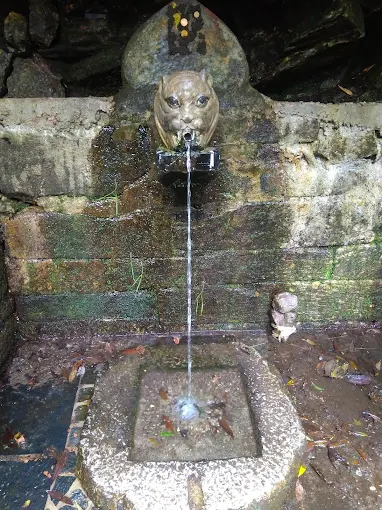
in your mobile




बागद्धर
बागमती नदिको उदगस्थल बागद्धर। सोच्छ पिउने पानी,सफा वातावरण र हरियाली वन पाखा भएकैै कारण बागद्धर कतिपय मान्छेको रोजाइमा पर्ने गरेको छ भन्दा अतियुक्ति नहोला । बागद्धरको सुरक्षा नेपाली सेनाले गर्दै आएको छ । शिवपुरी राष्ट्रिय निकुन्ज अन्तरर्गत पर्ने यो ठाँउ मेजरको कमाण्डमा छ । घुम्न जानेहरु पर्यटकका लागि रमाईलो ठाउँ रहेको छ ।
शिवपुरी निकुञ्जअन्तर्गत हिन्दु तथा बौद्ध धर्मावलम्बीहरूका महत्वपूर्ण धार्मिक स्थलहरू रहेका छन् । वागद्वार, जामाचो, विष्णुद्वार, तारेभीर, नागी गुम्बा आदि प्रमुख तीर्थस्थल हुन् । नव वर्षको प्रारम्भमा उपत्यका तथा वरपरका श्रद्धालुहरू वाग्मती तथा विष्णुमतीको उद्गमस्थल वागद्वार र विष्णुपादुकामा आई स्नान तथा पूजाआजा गर्दछन् । शिवपुरीको उत्तरी भगबाट उच्च हिमालका भव्य दृश्य तथा दक्षिण ढलानबाट काठमाडौं उपत्यका देख्न सकिन्छ । धेरै पर्यटकका रोजाइमा परेका हेलम्बु जाने प्रमुख गोरेटो बाटो यस निकुञ्ज क्षेत्रभित्र पर्दथ्यो । तर अहिले मोटरबाटो बनिसकेको छ । यो सडकबाट काठमाडौंका जोरपाटी, गोकर्णेश्वर, सुन्दरीजल र धाप बाँध हुँदै सिन्धुपाल्चोकको चिसापानी पुग्न सकिन्छ । वागद्वार वाग्मती नदीको उद्गमस्थल हो । वागद्वारबाट अर्थात् शिवका वाणी प्रकट हुन मुखरूपी द्वारबाट प्रकट भएकोले नै वाग्मती नदीको नाम रहन गएको हो । सृष्टिका समयमा यहाँ पानीको समस्या थियो । पानीको समस्या सुल्झाउन ब्रह्माल भगवान् शिवको आराधना गरे । मृगेन्द्र शिखर (शिवपुरीको डाँडामा प्रकट भएर) शिवले ब्रह्मालाई वरदान दिने बेलामा शिवको थुकबाट ब्रह्म विन्दु (छिटा) निस्कियो । त्यसबाट वाग्मती नदीको उद्भव भएको भन्ने कुरा हिमवत्खण्ड अध्याय ८६ लगायतमा पाइन्छ । यसैगरी स्वयम्भू पुराणका अनुसार क्रकुच्छन्द तथागत बुद्धले आफ्ना भिक्षुहरूलाई स्नान गराउन पानीको अभाव देखेपछि वाक्य उच्चारण (मन्त्र) मार्फत पर्वतबाट पानी उत्पन्न गराएको उल्लेख छ । वाक्यद्वारा पानी उत्पत्ति भएकोले यसको नाम वाक्यमती भनी प्रख्यात भयो । यही वाक्यमतीलाई पछि वाग्मती भन्न थालिएका हो । या वागद्वार सुन्दरीमाई मन्दिरबाट करिव साढे दुई कोशमाथि शिवपुरीको शिर भागमा छ । समुद्री सतहबाट २,६५० मिटर उचाइमा (२०३१ सालमा सूचना विभागद्वारा प्रकाशित मची–महाकाली) उत्पत्ति भएको वाग्मती नदीको लम्बाइ समुद्री सतहबाट १,१४० मिटर उचाइमा रहको कटुवाल दहसम्म मात्र हिसाब गर्दा ४४ किलोमिटर लामो छ । यो बीचको वाग्मती नदीको कुल जलाधार क्षेत्र लगभग १५७ वर्गकिलामिटर छ । (नापी विभाग सन् १९९८) ।
| Day | From | To |
|---|---|---|
| Sunday | 06:00 | 22:57 |
| Monday | 06:00 | 22:00 |
| Tuesday | 06:00 | 22:00 |
| Wednesday | 06:00 | 22:00 |
| Thursday | 06:00 | 22:00 |
| Friday | 06:00 | 22:00 |
| Saturday | 06:00 | 22:00 |
| Fee Category | Amount |
|---|---|
| Adult | 12 |
| From | Medium | Road condition | Duration | Fare |
|---|---|---|---|---|
| manvhawan | Foot | Graveled | 3 / ४ घण्टा हिडेर |





